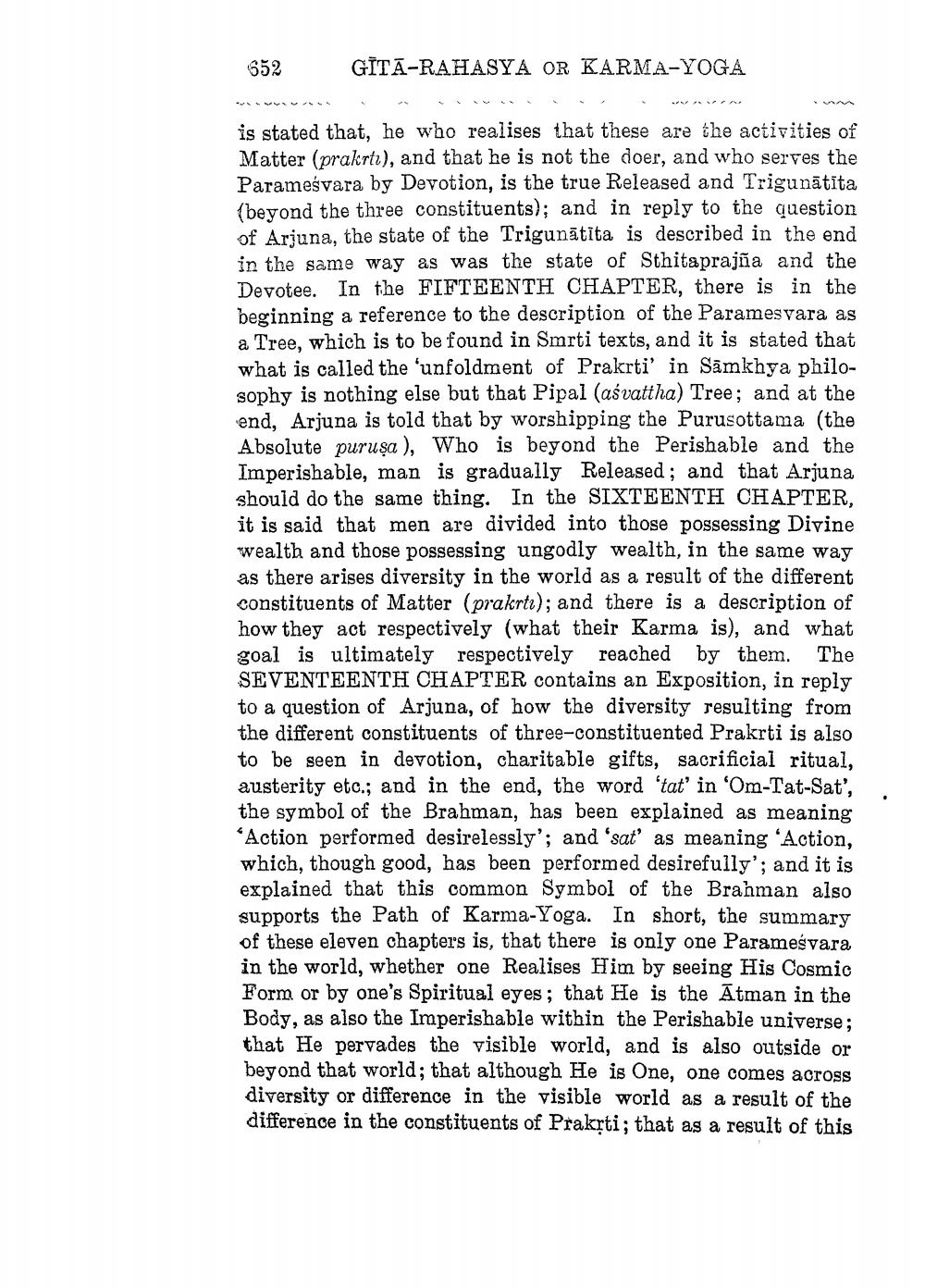________________
652
GITA-RAHASYA OR KARMA-YOGA
is stated that, he who realises that these are the activities of Matter (prakrti), and that he is not the doer, and who serves the Paramesvara by Devotion, is the true Released and Trigunatita (beyond the three constituents); and in reply to the question of Arjuna, the state of the Trigunatita is described in the end in the same way as was the state of Sthitaprajña and the Devotee. In the FIFTEENTH CHAPTER, there is in the beginning a reference to the description of the Paramesvara as a Tree, which is to be found in Smrti texts, and it is stated that what is called the 'unfoldment of Prakrti' in Samkhya philosophy is nothing else but that Pipal (asvattha) Tree; and at the end, Arjuna is told that by worshipping the Purusottama (the Absolute purusa), Who is beyond the Perishable and the Imperishable, man is gradually Released; and that Arjuna should do the same thing. In the SIXTEENTH CHAPTER, it is said that men are divided into those possessing Divine wealth and those possessing ungodly wealth, in the same way as there arises diversity in the world as a result of the different constituents of Matter (prakrts); and there is a description of how they act respectively (what their Karma is), and what goal is ultimately respectively reached by them. The SEVENTEENTH CHAPTER contains an Exposition, in reply to a question of Arjuna, of how the diversity resulting from the different constituents of three-constituented Prakrti is also to be seen in devotion, charitable gifts, sacrificial ritual, austerity etc.; and in the end, the word 'tat' in 'Om-Tat-Sat', the symbol of the Brahman, has been explained as meaning "Action performed desirelessly'; and 'sat as meaning 'Action, which, though good, has been performed desirefully'; and it is explained that this common Symbol of the Brahman also supports the Path of Karma-Yoga. In short, the summary of these eleven chapters is, that there is only one Paramesvara in the world, whether one Realises Him by seeing His Cosmic Form or by one's Spiritual eyes; that He is the Atman in the Body, as also the Imperishable within the Perishable universe; that He pervades the visible world, and is also outside or beyond that world; that although He is One, one comes across diversity or difference in the visible world as a result of the difference in the constituents of Prakṛti; that as a result of this




